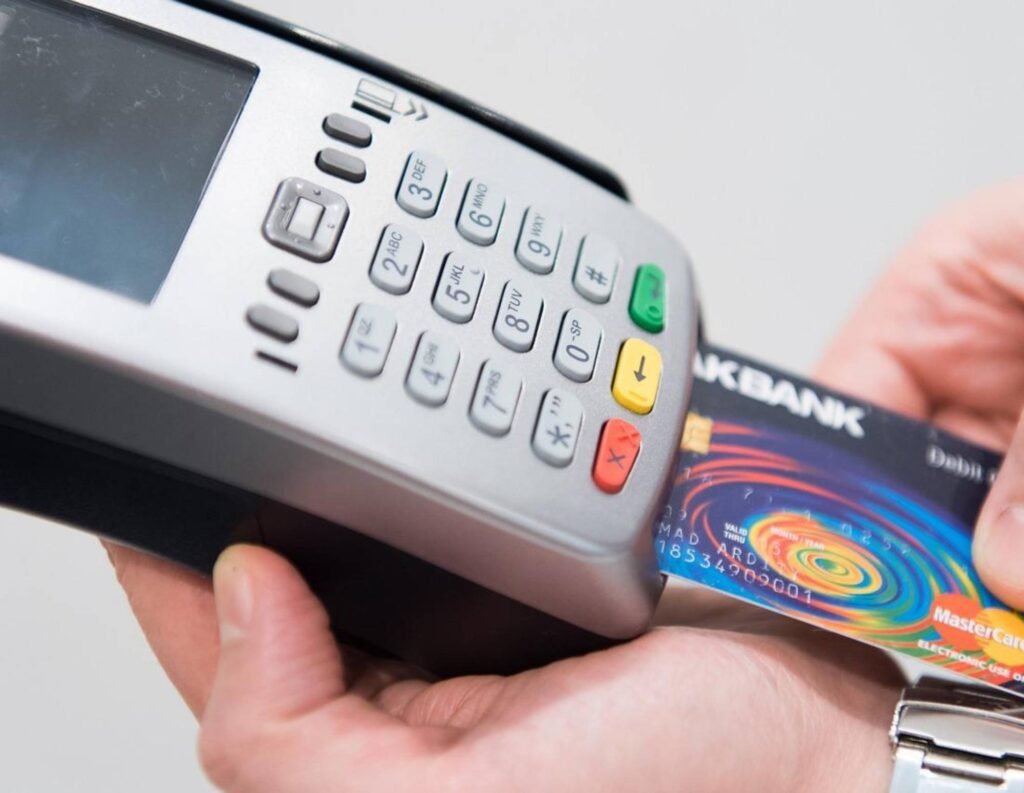Learning how to easily and securely accept online payments simplifies the billing process and generates a healthy cash flow. Use these 5 tips to get started.

In business, two things are too often in short supply—time and money—and they’re often intertwined. The time it takes to generate invoices, follow up on unpaid bills, and track payments takes away from revenue-generating activities. Yet neglecting these tasks will hurt your cash flow.
A digital payment management system enables you to accept payments online, making the payment process easier for both you and your clients. Clients get a secure and simple way to pay. You get paid faster and more efficiently. What’s not to love?
Clients around the world are embracing digital payments. In 2024, total online transaction value is forecast to surpass $11 trillion, and it should continue to grow by nearly 10% a year through 2028.
Small businesses are adopting online payments at a rapid rate, too. Today, 88% of businesses accept digital payments for credit cards, and 71% accept ACH payments.
Failing to adopt online payment options puts your business at risk. Clients that want a digital option may go elsewhere—driving business to your competitors. This can put you at a significant disadvantage, resulting in missed opportunities and lost revenue.
Handling payments manually drives up your overhead costs, and it’s significantly less secure. It can be difficult to track transactions and make sure you’re getting paid what you’re owed—especially if you have significant sales volumes.
With digital options now being the preferred method for payments, not offering them can also impact your brand’s reputation. Clients may think you’re behind the times and less innovative.
So how do you get started with online payments? We’ll walk you through five steps you should take to accept both card and ACH payments—two of the most popular options for service-based businesses. But first, let’s talk about the strategic questions that will guide you on your journey toward implementing an online payment solution.
Jump to:
- Start by identifying your business’s needs and payment requirements
- Understand how payment processing works
- Get set up to accept credit card transactions
- Accept e-checks with ACH processing
- Use a third-party payment processor
- Document your payments with online invoices
- Schedule automatic billing to accept recurring payments
- Features you should look for when selecting an online payment solution
- Accept online payments and more with HoneyBook
Start by identifying your business’s needs and payment requirements
Do you need to process one-time payments, recurring subscriptions, or both?
Does your business operate in multiple countries and require support for different currencies and payment methods?
Do you need the ability to split payments between multiple recipients?
Your answers will serve as your North Star, guiding you along your journey in selecting the payment solution that’s right for you.
Understand how payment processing works
There’s a little bit of groundwork we should lay before diving into how to accept payments online.
There are two major concepts you should understand when thinking about credit and debit card payments:
- Payment gateway
- Merchant account
What is a payment gateway?
A payment gateway is a software application that handles the technical side of your online transactions. It authorizes online payments and acts in much the same way as the credit card readers you might use at shops, restaurants, and other physical stores.
The payment gateway checks the card details, validates the transaction, and authorizes the payment.
Different types of payment gateways include shopping carts, hosted payment pages, and third-party integrations. There are pros and cons to each.
What is a merchant account?
A merchant account is what handles the money after the payment gateway authorizes the transaction. Essentially, it’s an online bank account that enables you to accept payments from your clients. The merchant account holds the money only temporarily. After settlement, the money in the merchant account transfers to your main business bank account.

How payment gateways and merchant accounts fit together
When your clients are ready to pay, they provide their payment information via a secure form, usually on your website or an electronic invoice.
Next, the payment gateway submits the client’s information to the payment processor used by the bank where you have your merchant account.
The payment processor will contact the issuing bank of the card and make sure the transaction is valid (i.e., that there are funds available, that the card is legitimate, etc.). The processor also connects with your merchant account to deposit the funds when they’re available.
When the purchase is either approved or declined by the card’s issuing bank, the gateway notifies the customer and the merchant (you) and, if it’s approved, routes the funds into your merchant account before they’re eventually sent to your main business bank account.
RELATED POST
The ultimate guide to small business payment processing

1. Get set up to accept credit card transactions
Now that you know how card transactions work, it’s time to talk about how you can get set up for accepting debit and credit card payments online.
If you intend to process your own payments, you will need to have a merchant account and payment gateway. These can be costly and complicated to set up on your own, which is why it’s usually best to go with a payment processor like PayPal, Stripe, Square, or HoneyBook. HoneyBook isn’t technically just a payment processor—it’s a clientflow management platform that allows you to do everything from sending invoices to collecting payments online and more.
It’s important to confirm you can accept most card types, such as Visa, MasterCard, and American Express.
Related Post
What to expect from credit card processing fees
2. Accept eChecks with ACH processing
An e-check (also known as an ACH transfer, ACH payment, or direct debit) is an electronic bank-to-bank payment that transfers funds through the ACH network rather than through a card network such as Visa or Mastercard.
After credit and debit cards, ACH payments are possibly the easiest way to accept payments online. Electronic checks allow for the direct debit of a bank account, combining the security, speed, and processing efficiency of electronic transactions with the same infrastructure and processes associated with paper checks.
Your clients simply input the information from their paper check (e.g., the routing number and account number) in an online payment or software interface, and the payment is processed like a check—but without the need for a physical check.
E-checks usually have lower fees than credit cards, and they’re more secure and predictable than waiting for a check to come through the mail. However, ACH payments typically take longer to process than credit card payments. They’re also a bit riskier since you could be paid by someone with a closed account or insufficient funds. However, you can add verification services to ensure the account is valid and funds are available.
3. Use a third-party payment processor
If you’re a small business looking for an easy and tested way to accept multiple payment options online, using a third-party or external best payment processor for small business is probably your best bet.
Companies like these are basically middlemen between you and the banks. Typically, the payment processor will act as both the merchant account and the payment gateway for you. So, if you’re wondering how to accept payments online without a merchant account of your own, this is your ticket!
However, not all processors are alike, and there are reasons why you shouldn’t use Venmo or similar services for business transactions.
Allowing clients to pay directly on your website can increase sales due to convenience alone. And, if you have long-term clients, they can save their card information for easy recurring payments.
You can find many of these features in online payment software, including hosting the payment form, providing secure payment processing, and securing your client’s payment information.
All third-party payment processors do include a transaction fee, but it’s in exchange for the work they take off your plate in setting up processing on your own.
4. Document your payments with online invoices
Using an online invoice generator makes it easy for your customers to pay their bills and receive a receipt in seconds. You can share an online invoice with your customers through email, and they can securely pay from any device. And cha-ching, the payment is complete.
Once you see how easy it is for a client to pay you online, you’ll never go back. Some platforms let you incorporate your branding into the payment process as well, so your clients always feel like they’re interacting with you.
Sending an online invoice also makes tracking payments easier. There’s no more updating a random spreadsheet or outdated notebook. With HoneyBook, for example, when your client pays an invoice, the amount is automatically marked as paid in your account. And here’s a bonus: 90% of invoices sent through HoneyBook get paid on time or early.
HoneyBook also allows you to send automatic payment reminders.
From your HoneyBook account, you can see the status of all your payments through an organized dashboard. It’s a super-simple way to track your income and outstanding payments.
Payment reminders that get you paid on time
Try HoneyBook’s automatic payment reminders to take work off your plate and get paid faster.
5. Schedule automatic billing to accept recurring payments
A subscription management service enables you to manage recurring payments. Companies offering these services typically automate billing and billing-related emails to take the manual work off your plate.
Billing your customers on a recurring basis can make everyone’s life easier if done correctly. With platforms like HoneyBook, your clients can securely save their payment information and choose to pay monthly, automatically. They won’t have to remember to pay another bill, and you won’t have to remind them or chase down payments.
Features you should look for when selecting an online payment solution
Does it integrate with accounting software?
Integration with accounting software can save you time and improve the accuracy of your financial recordkeeping. HoneyBook integrates with QuickBooks Online. With this QuickBooks integration, you can track all of your revenue in one place, along with your expenses, and automatically funnel all of your data into your accounting software to simplify your bookkeeping process.
How robust are the security measures?
Ensure that robust cybersecurity tools are used to protect sensitive data, including encryption, compliance with local and national data regulations, and fraud detection.
Does it offer reporting and analytics?
Choose a payment gateway with robust reporting and analytics features to gain insights into your financial performance.
Accept online payments and more with HoneyBook
Accepting ACH and credit card payments is just one way to deliver a better client experience. With HoneyBook, you can optimize your entire clientflow—from selling services to closing out projects and gathering feedback.
You can go with a regular payment processor, or you can go with an all-in-one clientflow solution for your business. That’s where HoneyBook comes in. Before accepting payments, you can build beautifully branded files that connect with your booking process, allowing clients to select their desired services, sign their contract, and pay, all in one simple step.
Explore how you can simplify and improve your business’s processes with HoneyBook.
Get paid faster with HoneyBook
Customize your process for getting paid. Connect payment to your sales collateral, scheduling, intake process, and more.




